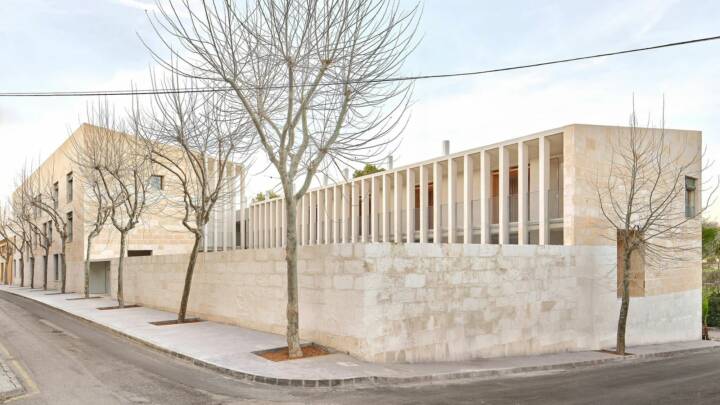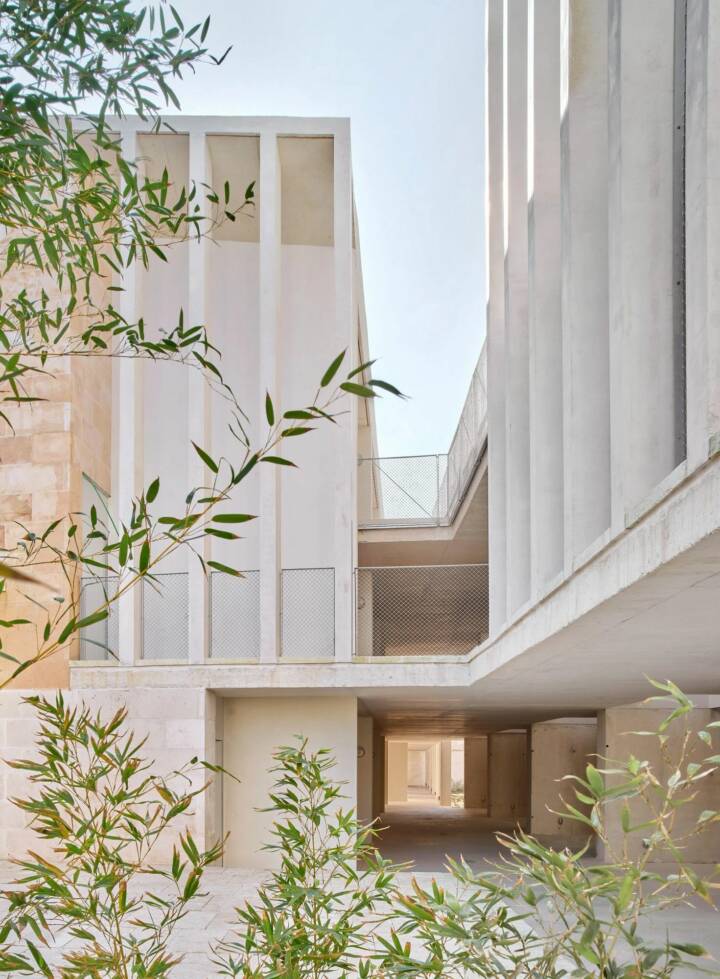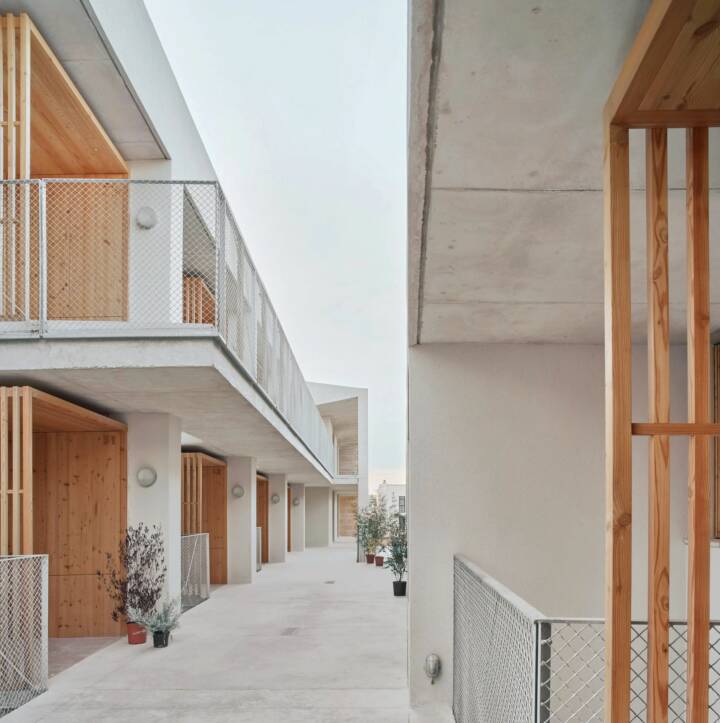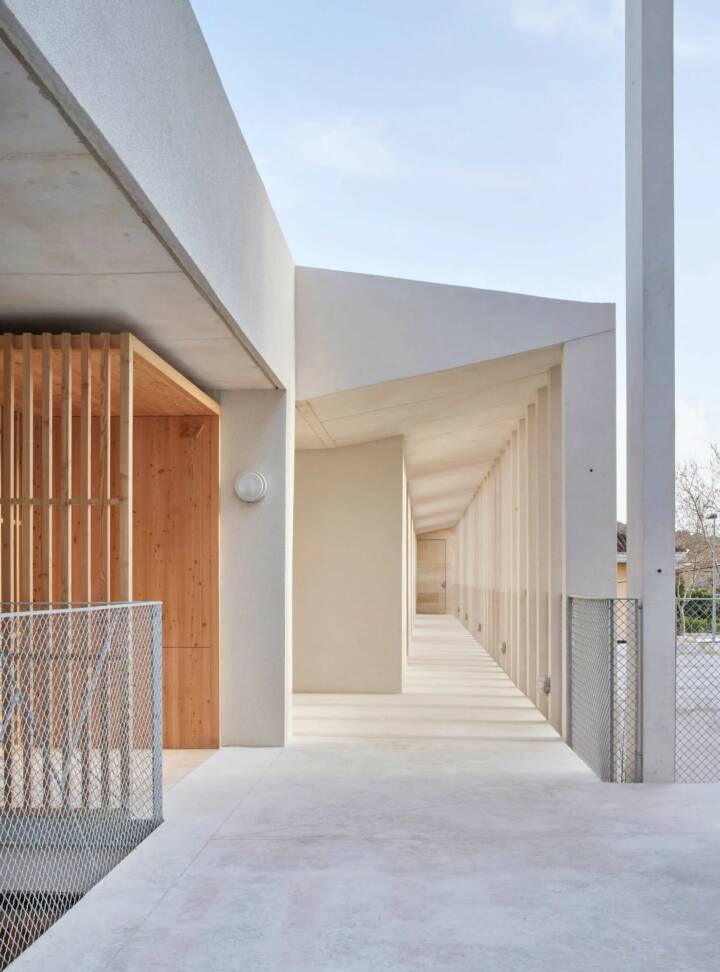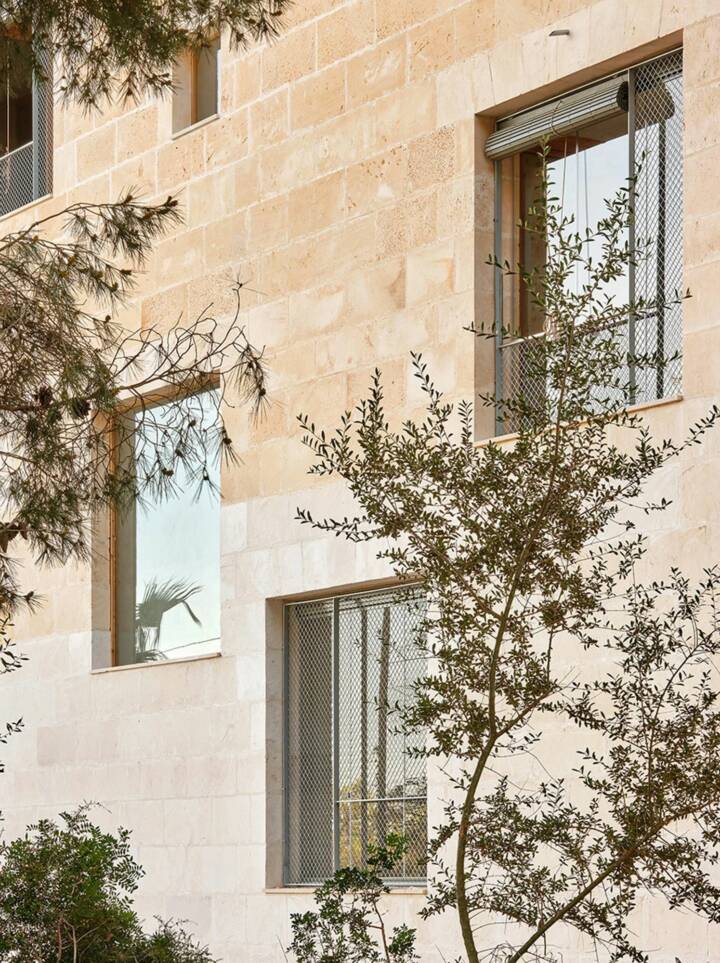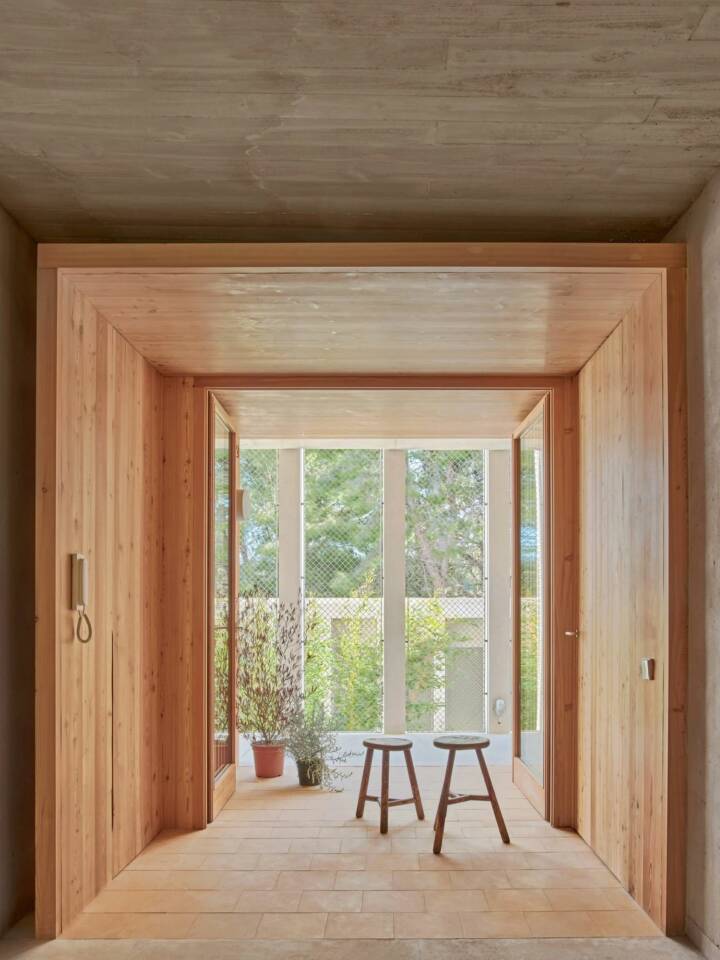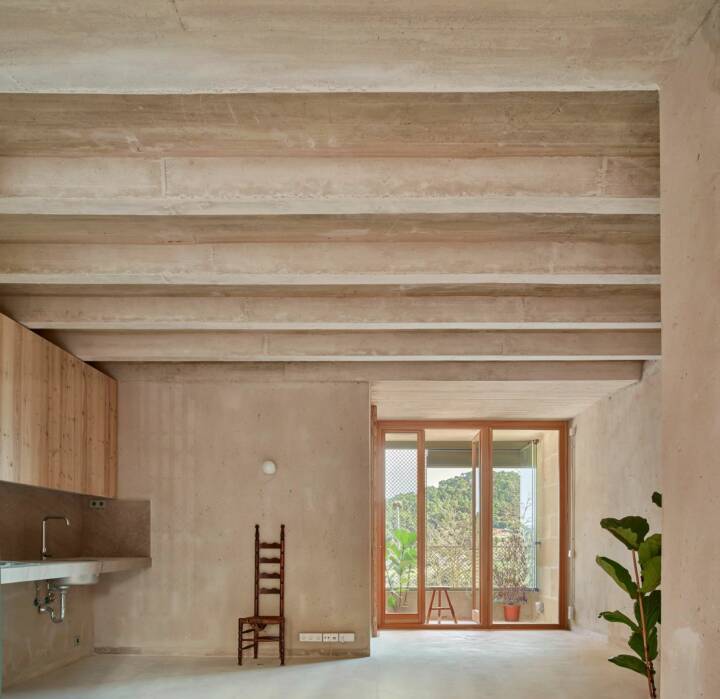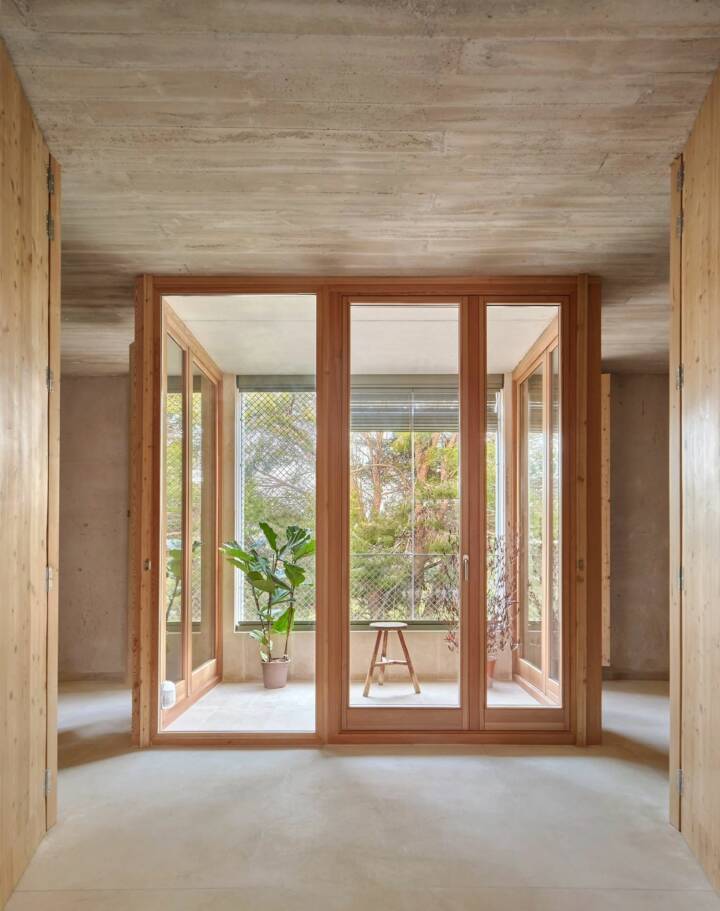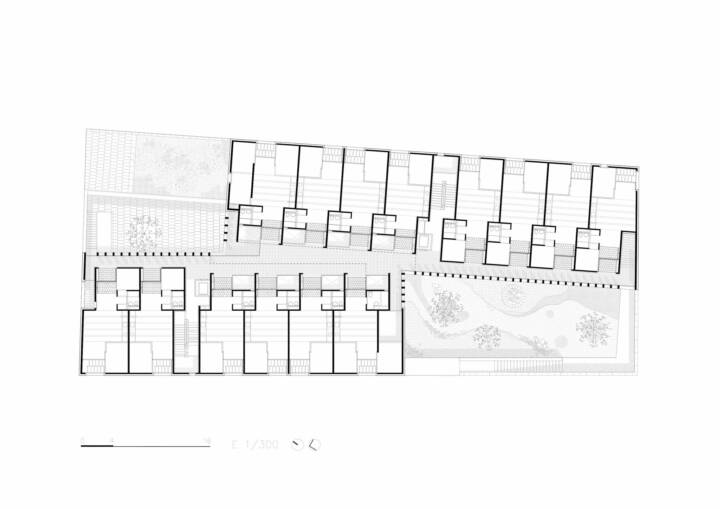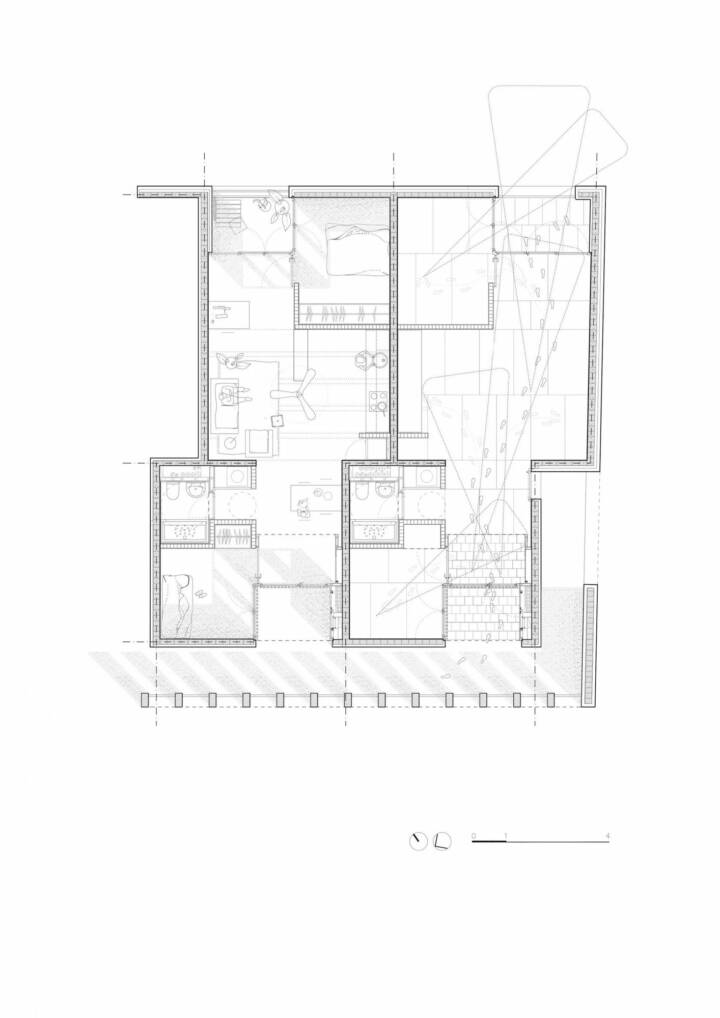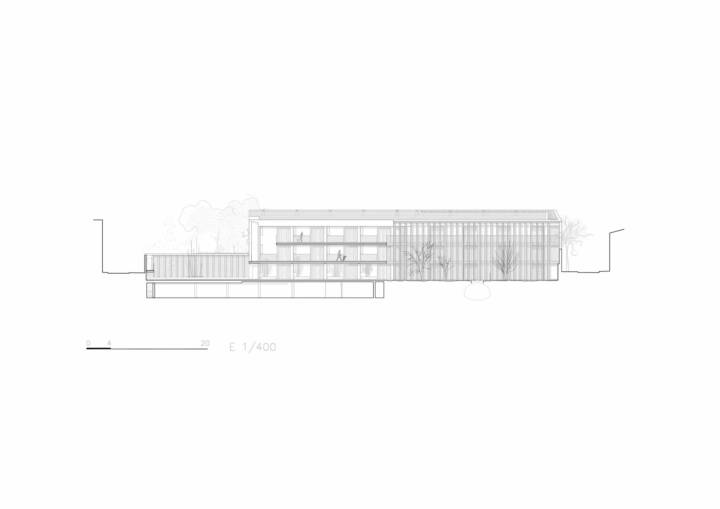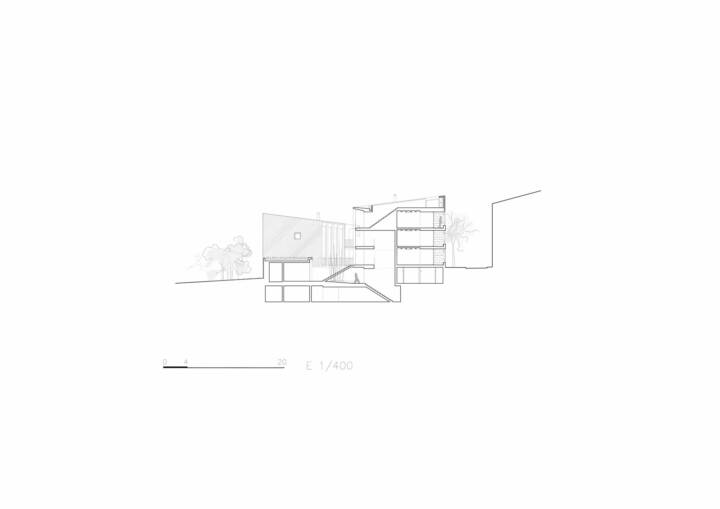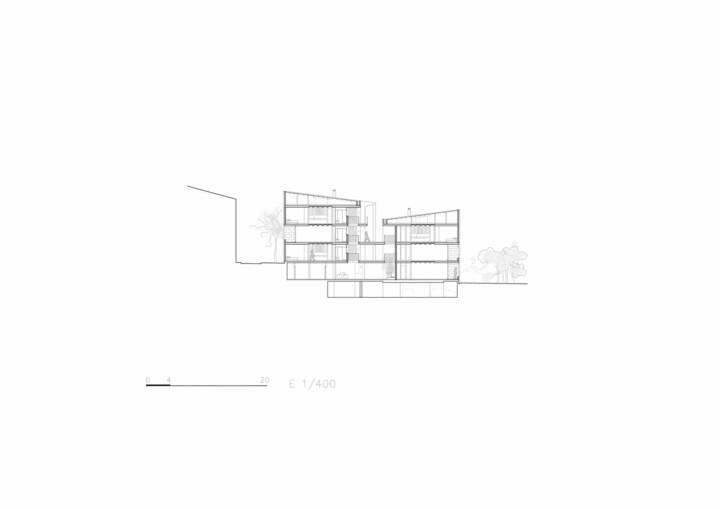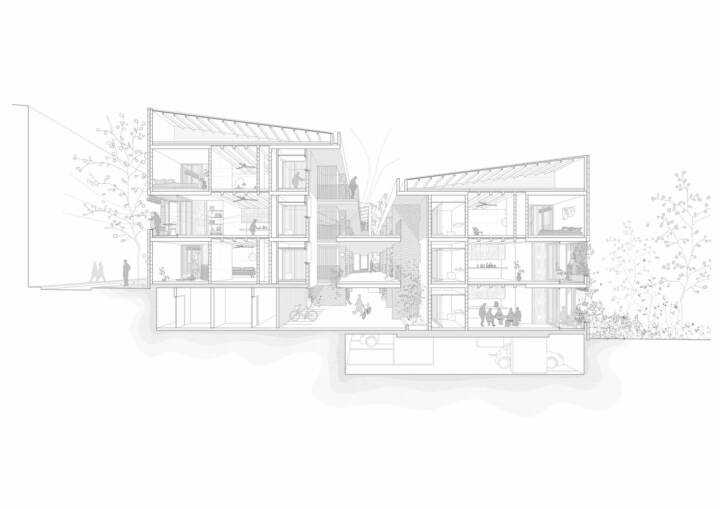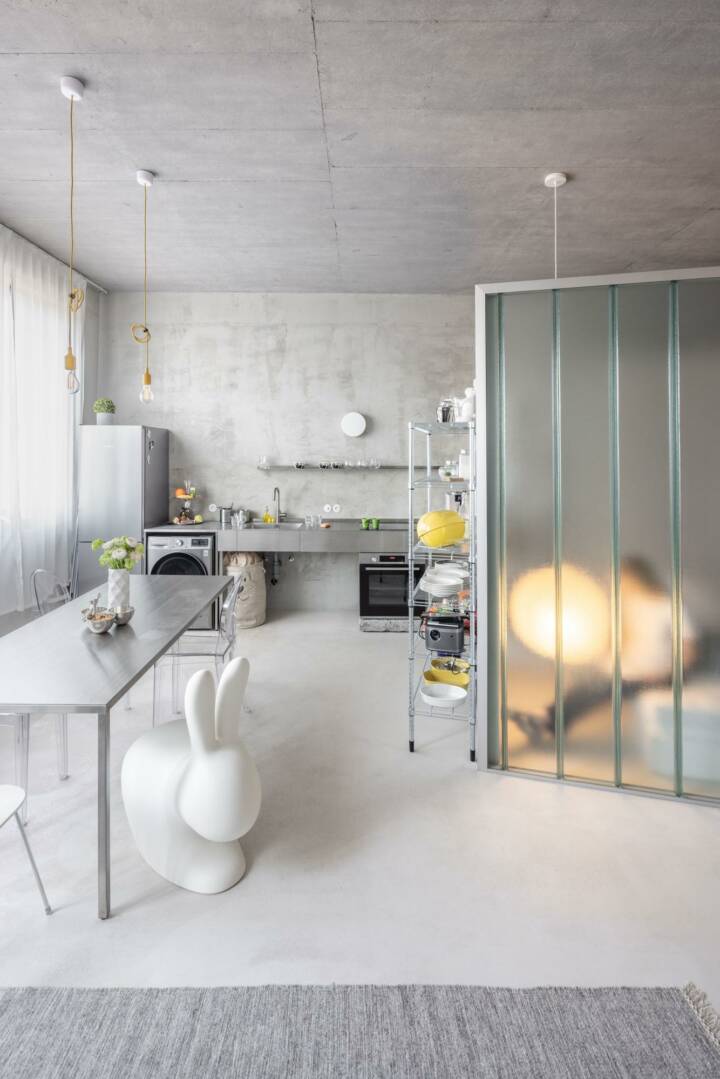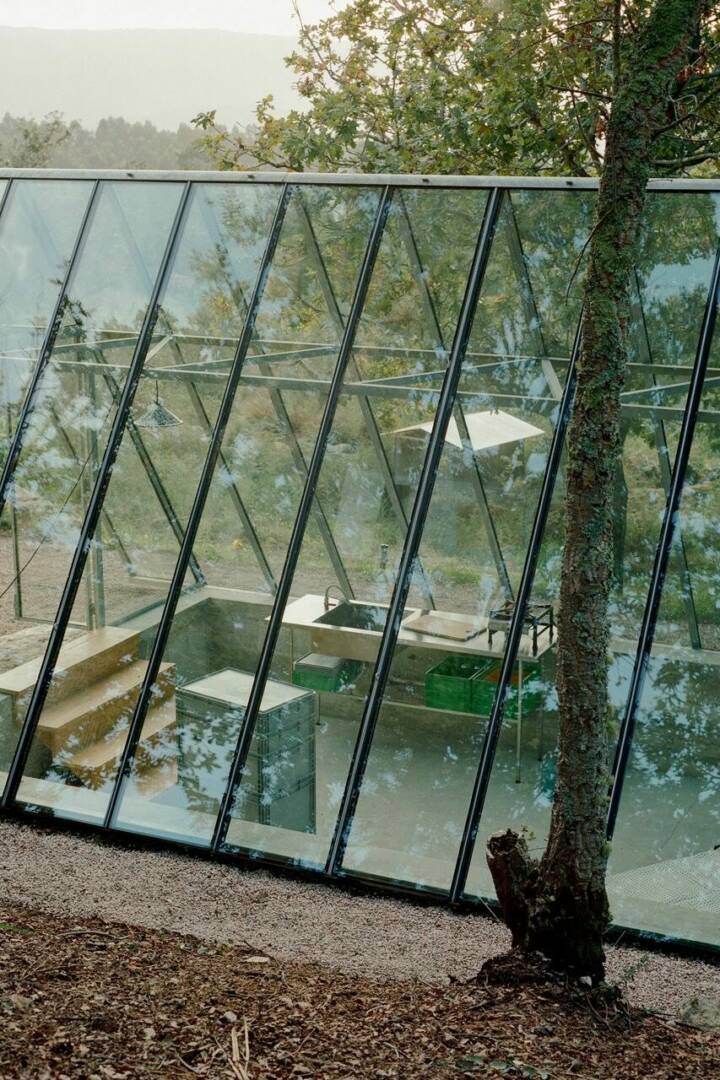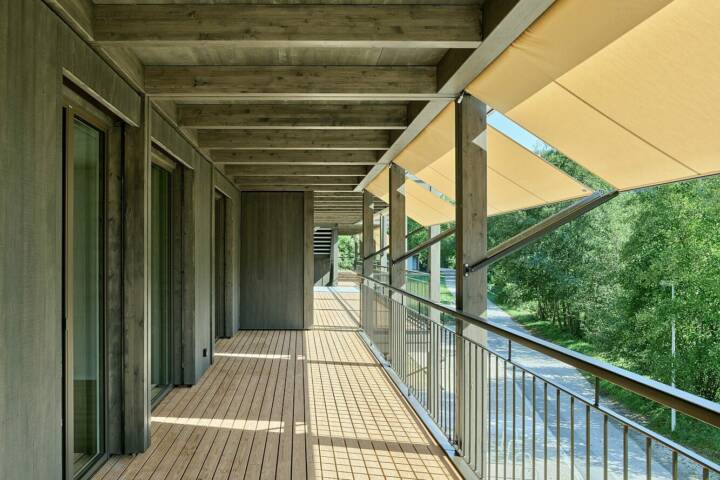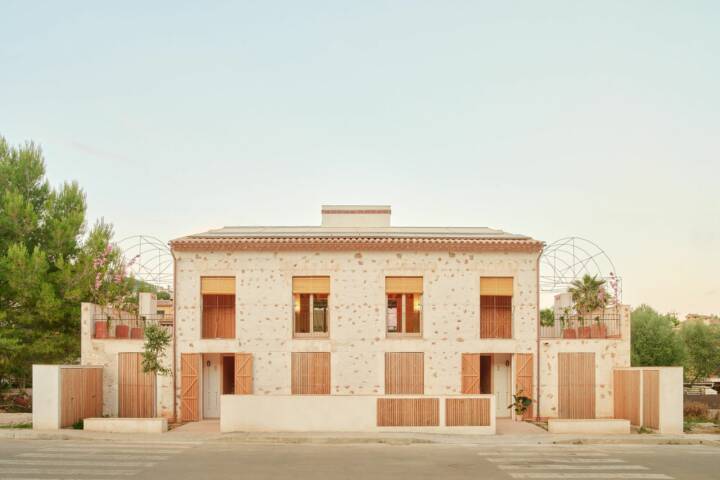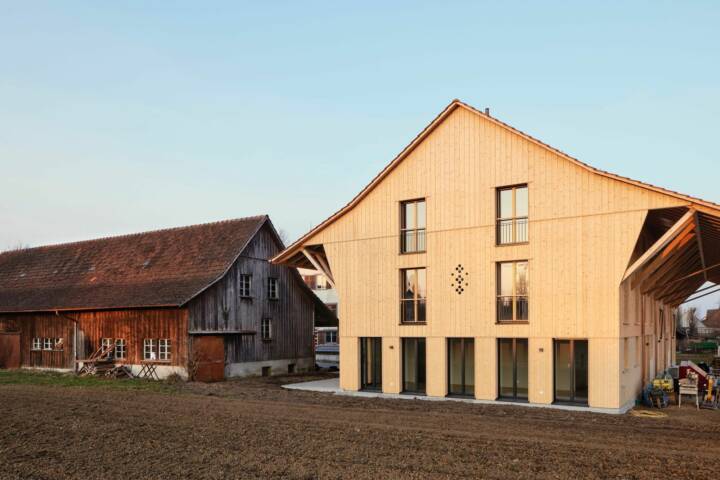Architects: Peris + Toral Arquitectes Photography: José Hevia Construction Period: 2024 Location: Son Servera, Spain
Situated in the northeast of the island of Mallorca, in Son Servera, this social housing project takes as a reference its setting, characterized by the presence of sandstone façades and walls that contain gardens, and sloping Arab tile roofs. These elements were decisive in the choice of materials and the design of the building.
The plot’s location on the edge of the town, its proximity to the historic centre and the small scale of the neighbouring plots suggested a strategy of fragmentation. The building comprises two volumes laid out along the perimeter streets, staggered to adapt to the sloping ground.
This arrangement not only reduces its visual impact on the old town, but it also creates two courtyards delimited by a perimeter wall at opposite corners, which function as intermediate spaces and accompany the entrances to the building. One of them is mineral in nature, functioning as a plaza, a social meeting place reinforced by the community rooms adjoining it.
The other is covered with vegetation and acts as a garden, which provides environmental and visual benefits and a habitat for biodiversity, and allows water to seep into the land, as well as preserving a pre-existing well on the site.
Read MoreCloseThe floor plan consists of six and eight homes in the respective parts, arranged around a walkway. This walkway is separated from the façades in the central stretch, generating a distance of privacy and empty space through which light and air flow to guarantee cross ventilation of the homes. The rest of the housing types have through ventilation, with dual orientation and views.
The structure shapes the space by means of load-bearing walls that fold in the shape of a meander to create bracing walls. This arrangement allows the diagonal connection of the interior space of the homes. The typology makes no distinction between day and night areas, situating the two rooms at opposite ends of the floor plan and connecting them by a through living room that looks outwards through two intermediate spaces: a heat collection terrace in the form of a wintergarden that makes for a building without active systems, and a wooden lattice gate to offer privacy at the entrance. Instead of opaque doors that separate and isolate, entrances boxes connect the homes with their intermediate spaces, protecting inhabitants’ privacy with wooden lattices. The system of frames opens out to create an outdoor room where the change of flooring indicates the limit of the private. The aim is to strike a balance between privacy and sharing. The walkways leading to the homes are elevated streets, promoting social interaction and community among the inhabitants.
The location in the building of the two communication shafts generates double circulation loops, extended by the presence of additional stairs at the ends of the walkways that take advantage of the fretwork-shape of the structure. This encourages a wide range of possible routes that converge in the courtyards.
The load-bearing walls are built of ceramic pieces fired with biomass from local industry, H20-type hollow bricks. As the apparent density of this material is low, it was decided to lay the bricks with the holes vertically to fill them with sand, thereby increasing their mass and inertia. This solution resolves acoustics between neighbours with a single skin. To seal the joints thoroughly and ensure the wall’s hygrothermal performance, it has a projected lime mortar plaster coat on both sides with a minimum thickness of 15 mm.
The white-concrete floor slabs are lightened, revealing the in-situ one-way ribs. The formwork is reused as a base for the sloping roof structure.
The walkways are finished with 10-cm cork ETICS clad with lime plaster.
The façade comprises self-supporting limestone, 10 cm thick, which is increased to 20 cm to form the openings and jack arches, and 40 cm in the walls. Two types of stone are used, a harder, heavier and more resistant white stone in the areas of contact with the ground, and a less dense one in the upper parts.
Local sandstone is used for the ashlars and in its amorphous version, lime, since both materials come from the same source, marès. Lime is used in the form of powder or paste in mortars and plasters, offering great benefits for comfort such as hygroscopicity, insulation and protection of surfaces, and providing antibacterial and fungicidal properties for a healthy indoor environment.
Text provided by the architect.
